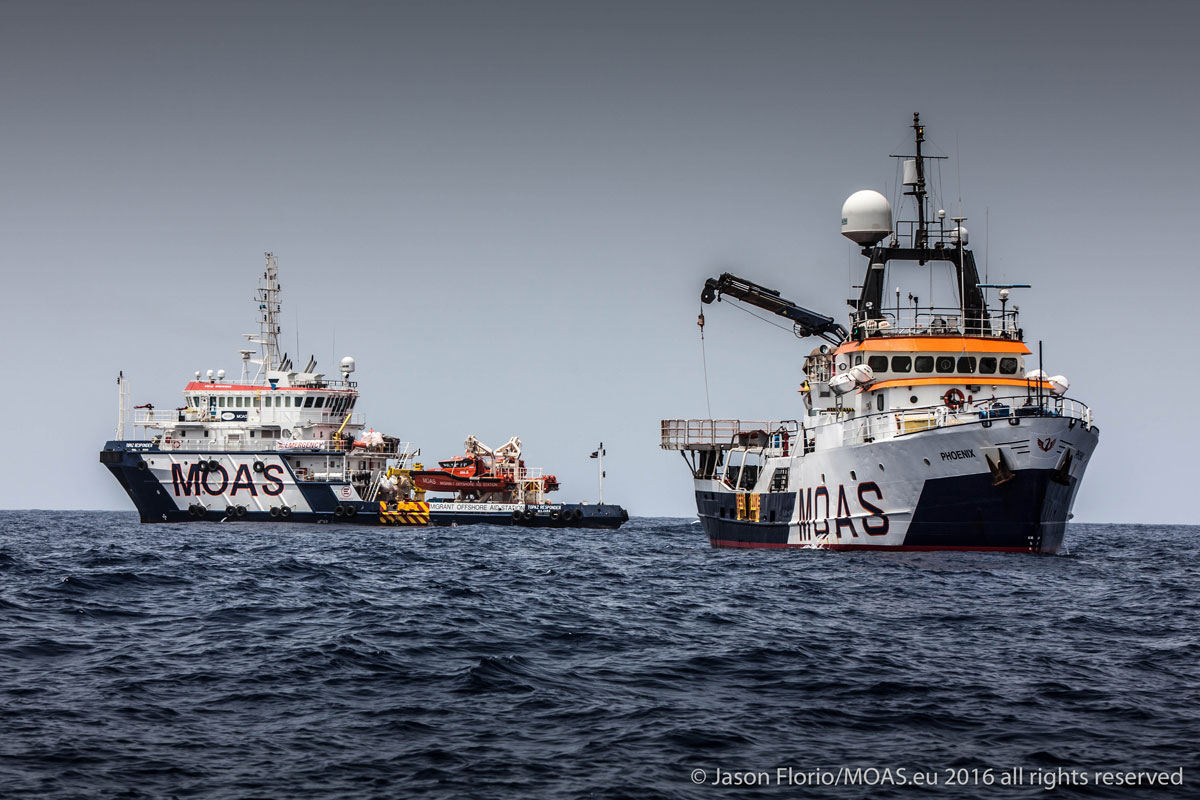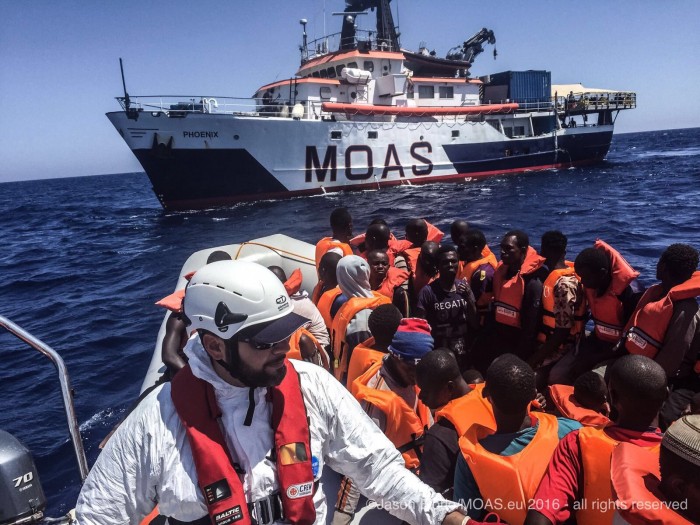Migrant Offshore Aid Station (MOAS) Fleet Saves Over 2000 People in Two Weeks on the Frontline of the Mediterranean Crisis
SINCE the Migrant Offshore Aid Station (MOAS) launched the 2016 Mediterranean mission on June 6th, over 2,000 people were rescued and assisted off the coast of Libya.

As the world celebrates the contribution of refugees to their communities around the world, a UNHCR report finds that 65.3 million people – or one person in 113 – were displaced from their homes by conflict and persecution last year. The MOAS fleet of two ships, two drones and over 40 humanitarians are working on the front lines of that global crisis.
After spending two weeks at sea as part of the Search and Rescue crew, founder Christopher Catrambone was face to face with the scale of the humanitarian disaster unfolding.
“These are men, women and even unaccompanied children who are willing to endure beatings, robberies, rape, incarceration to risk their lives at sea to find security for their families and themselves. When we pull these people from the sea we are often the first gracious act of humanity that they have experienced since being forced to leave their homes. The MOAS team hears and documents their stories and we all wonder what if that was us. Would anyone reach out their hand and rescue us? We trust our donors and supporters understand the importance of never losing our basic moral compass and continue to support the direct action of MOAS in saving lives.”
MOAS and its partners, Emergency and the Italian Red Cross, gave medical assistance to those rescued and have maintained a constant presence in the Mediterranean since operations began.
“Being aboard the Phoenix has been a very emotional experience so far. These people risk losing their lives twice: not only do they risk their physical lives in search of a better future, but in the process they also lose their security and culture when they leave their homeland behind. The most intense moment for me so far was treating a young man’s scars from being tortured in Libya” said Daniela Francesconi, Italian Red Cross’ nurse aboard the Phoenix.
“For two years Emergency has been working in Sicilian ports to give assistance to those arriving and for two weeks now we are also at sea in support of MOAS to ensure post-rescue assistance to all migrants trying to reach Europe. It was an inevitable step forward considering the continuous arrival of refugees and migrants, and especially considering the blindness of Europe, focused on protecting its borders rather than helping those in need. What has been the birthplace of our civilization and our democracy is in danger of becoming the graveyard of human rights”, stated Andrea Bellardinelli, the Head of Programme with Emergency.
Operating at the frontline of the world’s deadliest migrant border crossing, MOAS uses expensive but vital technology and a dedicated team of search and rescue professionals and volunteers to operate. Despite their cost, drones are proving again and again that technical advances can and must be used in this crisis.
So far this year, at least 70% of the boats rescued by MOAS were originally located by using drones.
“The use of the drone technology on the Phoenix plays an important part in the MOAS mission, expanding our area of operation, allowing us to shorten the time needed to assist refugees in danger of drowning”, said co-founder of MOAS Regina Catrambone.
MOAS has helped rescue over 15,000 people since it began in 2014, without a single casualty despite the crew working in extremely stressful circumstances.
Source: MOAS
 Subscribe to our newsletter. Receive a weekly round-up of all piracy-related & maritime situational awareness news.
Subscribe to our newsletter. Receive a weekly round-up of all piracy-related & maritime situational awareness news.
OCEANUSLive.org
Information, Security, Safety; Shared
Submitted by Team@oceanuslive.org